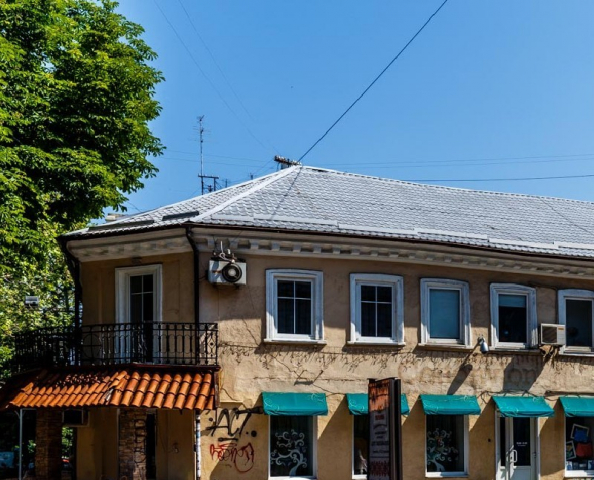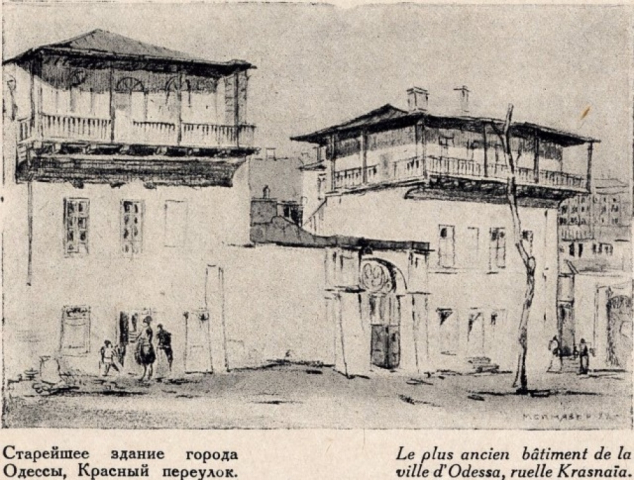In 1789, Russian troops and Cossacks from the Black Sea army under the general command of General Derybas O. captured the Ottoman fortress Khadjibey. From that moment, the life of the ancient city, connected with Islamic world history and culture, severely changed. Muslim Khadzhibey was established in the middle of the XIV century, when the emir Khadjibey ruled the ulus, which was situated between the Dniester and Dnipro rivers. He was among the highest-ranked confidants of several Golden Horde khans. Khadjibey is known for his participation in the Battle of Blue Waters in 1362. That year, the Golden Horde, torn by internal conflicts, was not able to field a large army that allowed the Grand Duke of Lithuania Olgerd to win easily. The Polish chronicler Maciej Stryjkovsky, while describing the battle, noted an important detail: “Three of their princelings were killed in the battle: Kutlubakh, Kachibey (Salt lake Kachibeyske was named after him, which is situated in Dyki Polya on the way to Ochakiv) and Sultan Dimeiter.” Kachibey is Emir Khadjibey, whose name was given to the estuary in the Black Sea steppes, and to the predecessor of Odesa - the city of Khadjibey. It is also worth mentioning that, in fact, Khadjibey and other Tatar commanders did not die in the Battle of Blue Waters. The evidence of that was the label of Khan Tokhtamysh, issued to Emir Khadjibey in 1382. At the end of the XIV century, the Grand Duchy of Lithuania captured Khadjibey settlement, along with the Dniester-Dnipro interfluve area. Prince Vitovt built a stone castle and a port on the sea coast, which further became a centre of grain trade. However, already at the end of the 15th century, the territory between the Dniester and the Southern Bug came into the jurisdiction of the Ottoman Empire and the Crimean Khanate – as a result, the port no longer fulfilled its role, and the fortress, built by the Lithuanians, fell into decay as well. Khadjibey did not have a permanent population for a long time, and even a military post was not permanently located in the castle. The city revival began only in the middle of the 18th century, when the authorities of the Ottoman Empire, amid the aggravation of tension between them and Russia, decided to build a new fortress that would have a garrison located on a regular basis. In 1766, a Russian spy Ivan Isleniev came to Khadjibey undercovered as a merchant.
Having great experience in drawing maps and plans, he studied all the strengths and weaknesses of the Turkish fortress, got information about the garrison numbering, and based on that information, made a detailed map. Islenev’s plan included Ottoman pasha’s house, and a significant caravanserai. A mosque is also indicated there. However, there are almost no Khadjibey residential buildings on the Russian spy’s map, except the Janissaries barracks. In addition, he points out that the Vlachs Christians (Moldavians) were settled in the countryside, that is, in the city outskirts. We know, in addition to Turks and Vlachs, in Khadjibey lived Jews, Armenians, and Greeks. Many Tatars lived in Khadjibey as well. Such a large settlement could not exist so long time without all features attributed to the city - a market and a cemetery. In Khadjibey, the market was located on the site of the current Greek Square. There was a Muslim cemetery next to this square. Perhaps, it is established in the time of the Golden Horde. A number of sources indirectly implied this theory. Particularly, in 1542, Sultan Suleiman I Kanuni wrote in a letter addressed to the Polish king Sigismund the following: A lot of Muslim graves and mosques are situated there... The signs have not disappeared yet A little later, at the beginning of the 17th century, the Ottoman writer and traveler Ibrahim Pechevi reports: “Even now, there are several cemeteries on the Ochakov plains. Quranic verses and confession words are written on some graveyard stones. ” The fact that an old Muslim cemetery was located between Greek Square, Katerynynska Street and the City Garden is also reported by the historian Smolyaninov K. in his work “History of Odesa. The Historical essay”, published in 1853.
After Russian troops had captured Khadjibey, the city was intensively being developed. The Muslim cemetery had existed until the beginning of the 19th century. One of the first buildings constructed in the territory of the cemetery was retired lieutenant Prokopeus’ house that has remained until today. It is also interesting that immigrants from the Crimea, the Karaite Egiz family, settled not far from Prokopeus’ house, outside the Muslim cemetery. They built one of the most picturesque houses of old Odesa. It is a traditional Crimean-inspired house with wonderful balconies reminding Bakhchisarai. During the first decades after Odesa had been established, the Muslim population was small. However, it had been developing by the middle of the XIX century. In this regard, the Muslim community appealed to the city authorities with a request to open a mosque and allocate a land plot for the cemetery.
The mosque issue remained being unsolved for several decades, but the issue concerning the cemetery was resolved quickly enough. Near the old city cemetery, behind the fence, the city authority allocated plots for the tombs of Karaites, Jews and a separate plot for Muslims . Later, in 1870, a mosque was built on this site according to the project of the Azerbaijani architect Karbala Sefihan Karabagi. It became the only house of Muslims’ worship in Odesa for many years. Before the revolution of 1917, Sabirzyan Safarov was a mullah in the Odesa mosque, and Hassan Abdul Khairov Yanbuhtin was a muezzin. There were several mektebs in the city, including a female one. Copies of the Quran, which Odesa Muslims were reading, were printed in the Crimean printing house owned by Ismail Gasprinsky.
In the mid 30-ies of the XX century, the city authorities decided to remove the Muslim cemetery as well as Christian and Jewish ones. They built a park at the site of the destroyed tombs, and part of the territory was built up with administrative buildings. The disappearance of the cemetery and mosque dealt a serious blow to the Muslim community of Odesa. Only in the early 90s, after the declaration of independence of Ukraine, the religious life of Muslims began to gradually revive.
The first Islamic community was officially registered in 1992. The construction of the Arab Cultural Centre and mosque began on Rishelievska Street in 1998, and finished in 2000. In 2018, next to the entrance to the old Muslim cemetery, a Moorish-inspired arch appeared as reminder that the Muslims were buried there.
Oleksandr Stepanchenko




